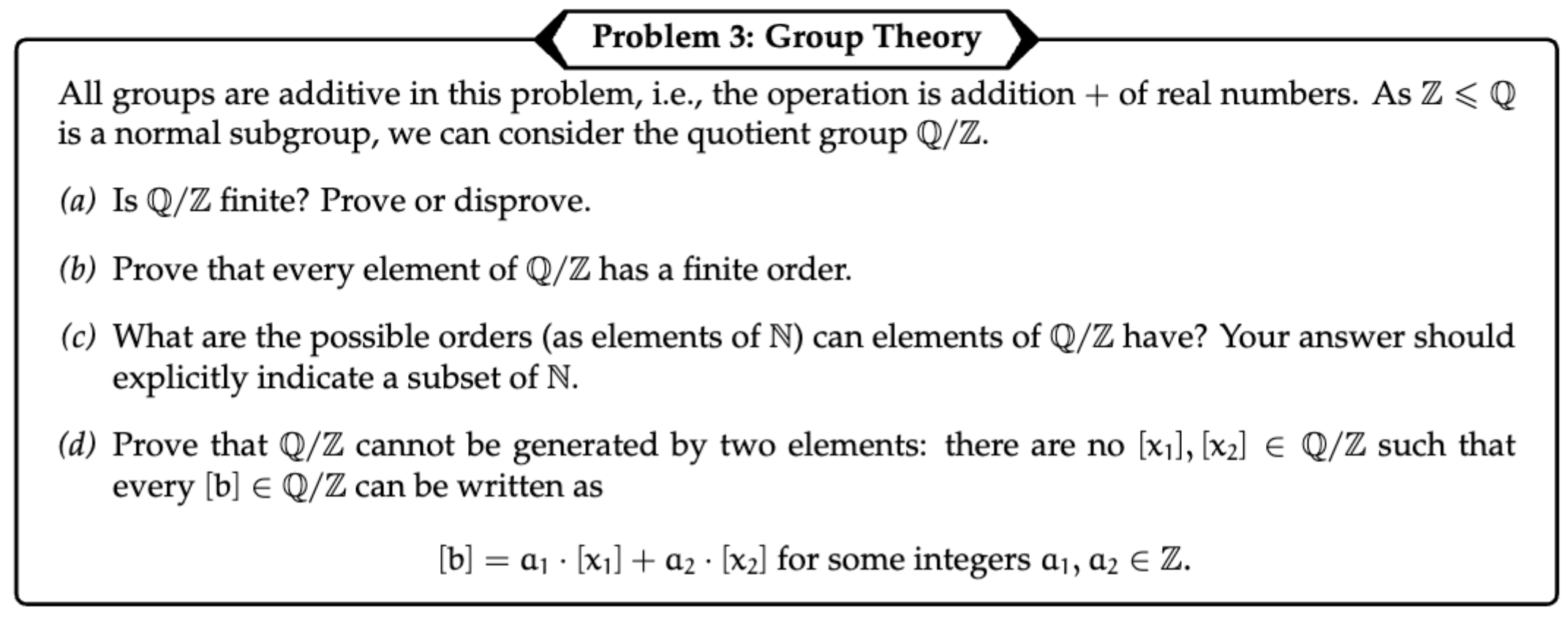Practice Final
Question 0
Top

a:
A Ideal in a commutative ring
b.
A group action on this map can be defined as
Bottom

a.
A
b.
For
For any
And
For
For any
And the degree of
Question 1
Top

a.
b.
Proof:
- Lets first prove
. - This is easy as we have additive closure, so if both
are in we have it so and this direction is proved.
- This is easy as we have additive closure, so if both
- We have to prove that
- Notice,
. and similarly - From here, we know
- So,
and .
- We have to prove that
Bottom

a.
b.
The norm of
Question 2
Top

a.
Proof:
- Let
. and . We have to show . - First, lets see where
is. Notice that if then we would have which is a contradiction. So . - This is good because we know that
and all its powers are also in . Thus and we have proved that we can generate every element of with .
b.
Proof:
- For the sake of contradiction, assume that
was an injective homomorphism. - Then, let
. As the homomorphism is injective, is the case only - Then, we know
Problem 2
Top

a.
b.
The largest possible order in
This is
Problem 3
Top

a
g is power 4 as it gets the identity when multiplied to itself 4 times.
h is power 3
You can not use the LCM rule for the order here because that only works if the elemets commute. The order is infinate if you multiply it out
b
Proof:
- The only subgroups of
are trivial via langranges. So can either be iso to {e} or . will always have elements, so the only case is that it is iso to which only happens when is .
Bottom

a
Problem 4
Top

a
Lets define
Lets define
Evaluation homomorphisms are surjective as the integers alone get every single real number
Bottom

b.
Notice that the ideal
Then, you can get every element in
Now notice, this leaves all integers such that
This leaves mod
This is just the ring
Problem 6

c.
We know that
Letting
Now assume

a.
We know
By tower rule, another supposed subfield between